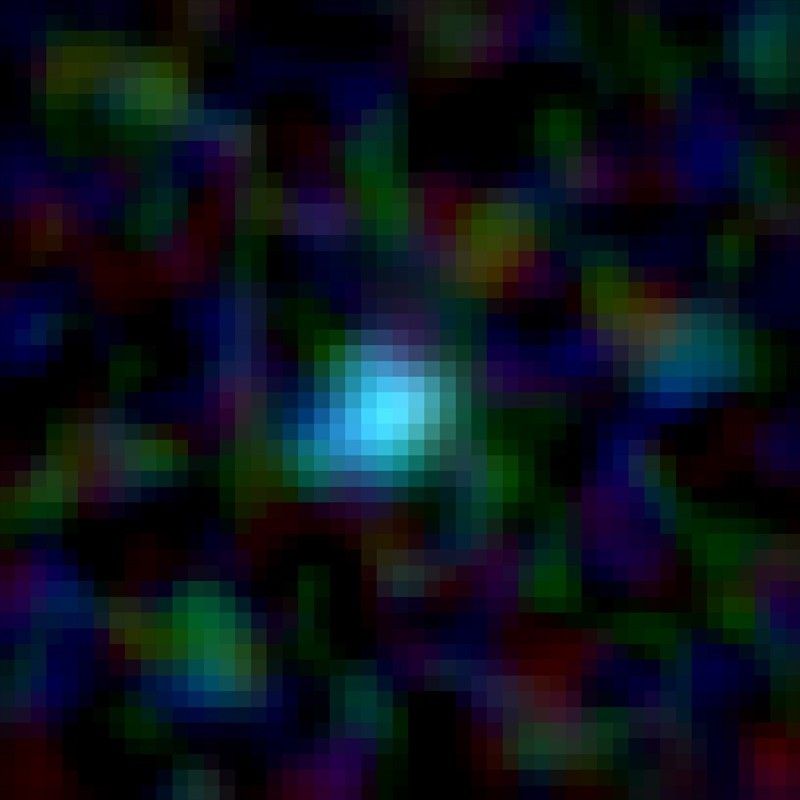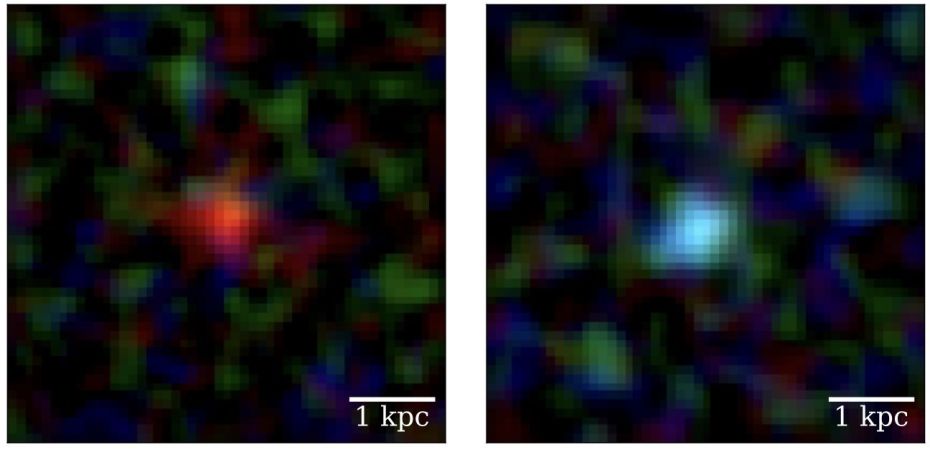
The team estimates that it is from 280 million years after the Big Bang.
Credit: Steven Finkelstein (UT Austin), Micaela Bagley (UT Austin), Casey Papovich (Texas A&M), Denis Burgarella, Véronique Buat, Laure Ciesla and Lise-Marie Seillé (Aix Marseille Univ, CNRS, CNES, LAM), and the CEERS Team.
The James Webb Space Telescope (JWST) is the successor of the Hubble Space Telescope. JWST is designed to answer outstanding questions about our origins: from the formation of stars and planets to the birth of the first galaxies in the early Universe. JWST was built by an international partnership between NASA, ESA, and CSA. The telescope launched on an Ariane 5 from Europe's Spaceport in French Guiana on the December 25, 2021 at 13:20 (European time) and it reached its final orbit around the L2 point on the January 24, 2022.
The Cosmic Evolution Early Release Science (CEERS) is one of the JWST Early Release Science (ERS) program. Our CEERS team identified a candidate galaxy at a redshift z ~ 14, that may have existed when the universe was less than 290 million years old after the Big Bang (13.8 billion years today). We published the study on the open-access archive arXiv on July 25, 2022, on this source nicknamed “Maisie’s Galaxy” (after the name of the first author’s daughter) entitled: “ A Long Time Ago in a Galaxy Far, Far Away: A Candidate z ~ 14 Galaxy in Early JWST CEERS Imaging “.

The left image is a composite of HST/ACS F606W and F814W in blue, F115W and F150W in green, and F200W in red. This shows the galaxy candidate as red due to the very high redshift resulting in no detected flux in the filters assigned to the blue and green colors. The right image shows an approximated “true” rest-UV color image, composed entirely of the long-wavelength channel filters F277W in blue, F356W in green, F410M+F444W in red). The scale bar corresponds to 1 (physical) kpc assuming z = 14 at a scale of 0.300 per kpc. Credit: Steven Finkelstein (UT Austin), Micaela Bagley (UT Austin), Casey Papovich (Texas A&M), Denis Burgarella, Véronique Buat, Laure Ciesla and Lise-Marie Seillé (Aix Marseille Univ, CNRS, CNES, LAM), and the CEERS Team.
Denis Burgarella comments: “We did not expect to find such a galaxy in these first JWST images. Indeed, it was quite unlikely that such a detection at this redshift could be achieved in a field corresponding to only 20% of the entire CEERS field of view. Why? Prior to JWST, most models did not predict that such large galaxies would exist so early in the life of the Universe. Although we have found only one galaxy so far, the analyzed field of view remains very small, and most models predict less than one source on this surface of the sky.”
Another unexpected fact about Maisie’s galaxy, surprisingly, is that it is relatively massive (about 300 million solar masses as compared to about 200 billion solar masses for the Milky Way). In fact, galaxies were just beginning to form, and scientists did not expect such galaxies to form so close to the Big Bang in time. Laure Ciesla adds: “Discovering candidate galaxies at redshifts greater than z = 10 so quickly is surprising. These first results of JWST are quite astonishing, but at the same time exciting. This galaxy would form stars at the same rate as the Milky Way does today. However, we cannot rule out that the characteristics of the stars would be quite different”. Véronique Buat concludes : "At redshifts z ~ 3 to 5 (should we called this “low redshift” from now on?), we will be able to map galaxies with unparalleled precision to understand their evolution".
Denis Burgarella : denis.burgarella@lam.fr - 06 07 03 88 06
Laure Ciesla : laure.ciesla@lam.fr - 07 83 92 08 25
Véronique Buat : veronique.buat@lam.fr - 06 62 82 58 47

